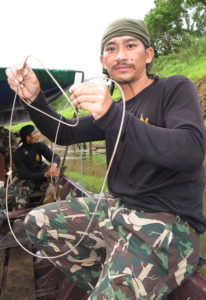A newly released report on World Wildlife Crime from the United Nations Office on Drugs and Crime (UNODC) makes shocking reading. Based on data in the UNODC’s World WISE database, which currently contains details of around 180,000 seizures from 149 countries and this is just the tip of the iceberg. These are only discovered and reported incidents and there are plenty that still are undiscovered. The database is also focused entirely on transboundary crime rather than domestic.
According to the figures, 6,000 species have been seized between 1999-2018, with the highest proportion being mammals at 23% between 1999-2018. Within that (based on standard value) elephant ivory was deemed the most highly traded. Chapter 6 on Big Cats, also notes that almost two-thirds of tiger seizure incidents in 1999-2018 were either tiger bone products or tiger medicinal products made primarily from bone.
According to the report summary
All parts of the tiger are traded and used, for traditional medicine and for other purposes, but the bones are generally most sought after. Consumer demand has shifted in recent years with tiger product buyers purchasing these goods as a sign of wealth rather than for their health. The most popular bone-based products appear to be tiger wine and tiger glue/paste. A large part of the trade has shifted to online sales through social media and messaging apps.
While the number of seizures of tigers and their parts remains small, that number has risen from 2007 to 2018. Thailand and India are the main source countries for these seizures, although sourcing from Nepal, Bangladesh, and Bhutan is also ongoing. Given the large captive tiger population in Thailand, which has less than 200 wild specimens, most of these seizures likely involved farmed animals. In contrast, seizures from India, with the world’s largest wild population, are likely from wild animals. Trafficking networks for tiger products involve Chinese, Vietnamese, Indian, and Indonesian traders who primarily sell the products tomedicinal industries in China and manufacturers or consumers in Viet Nam and Thailand.


